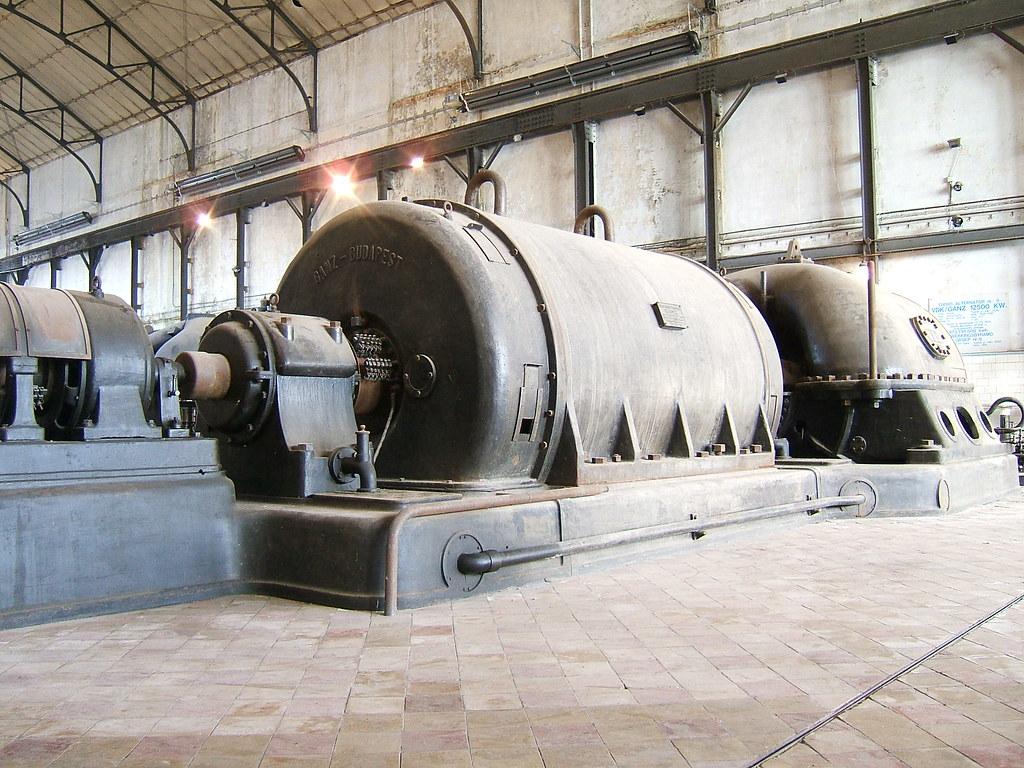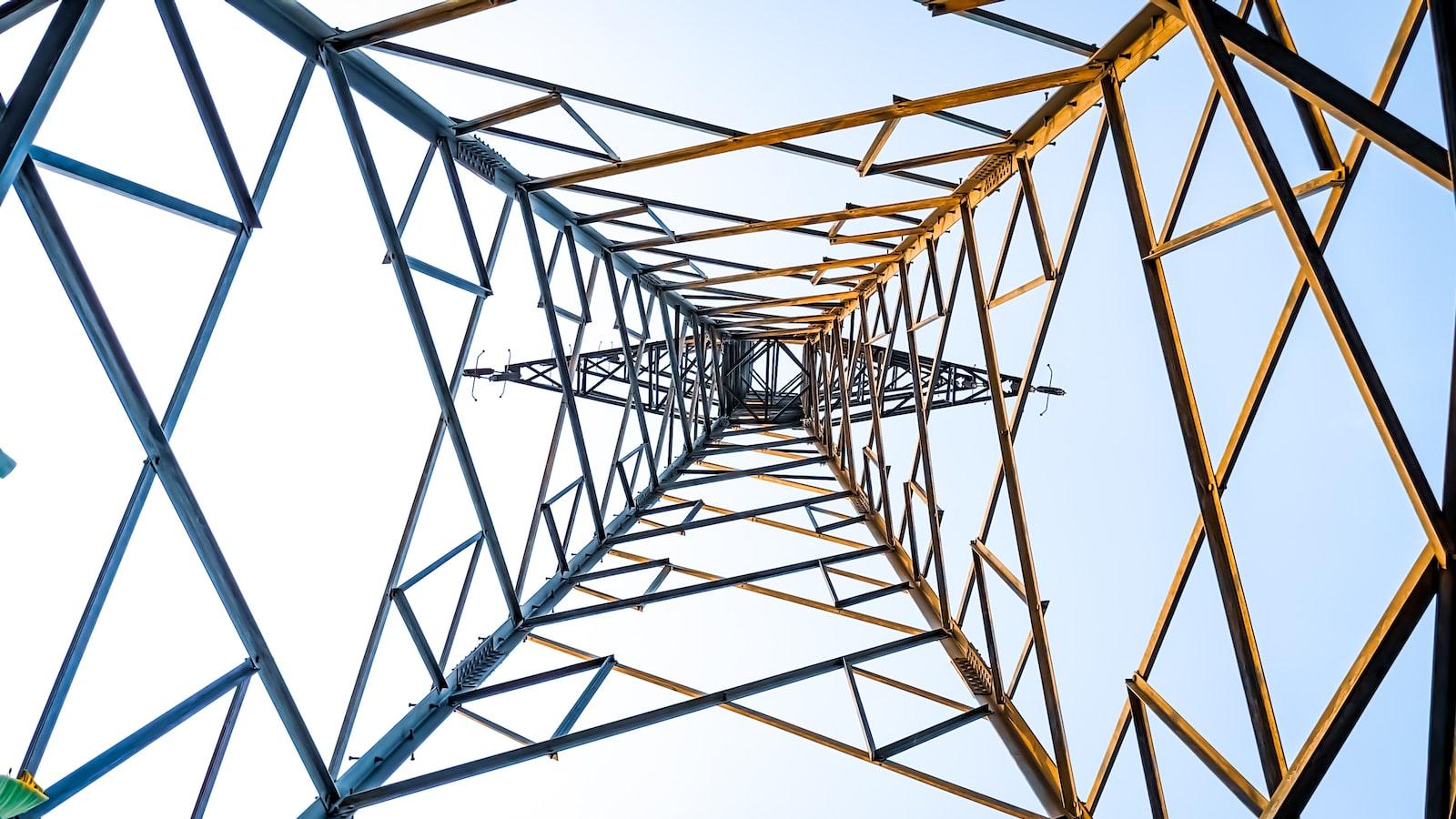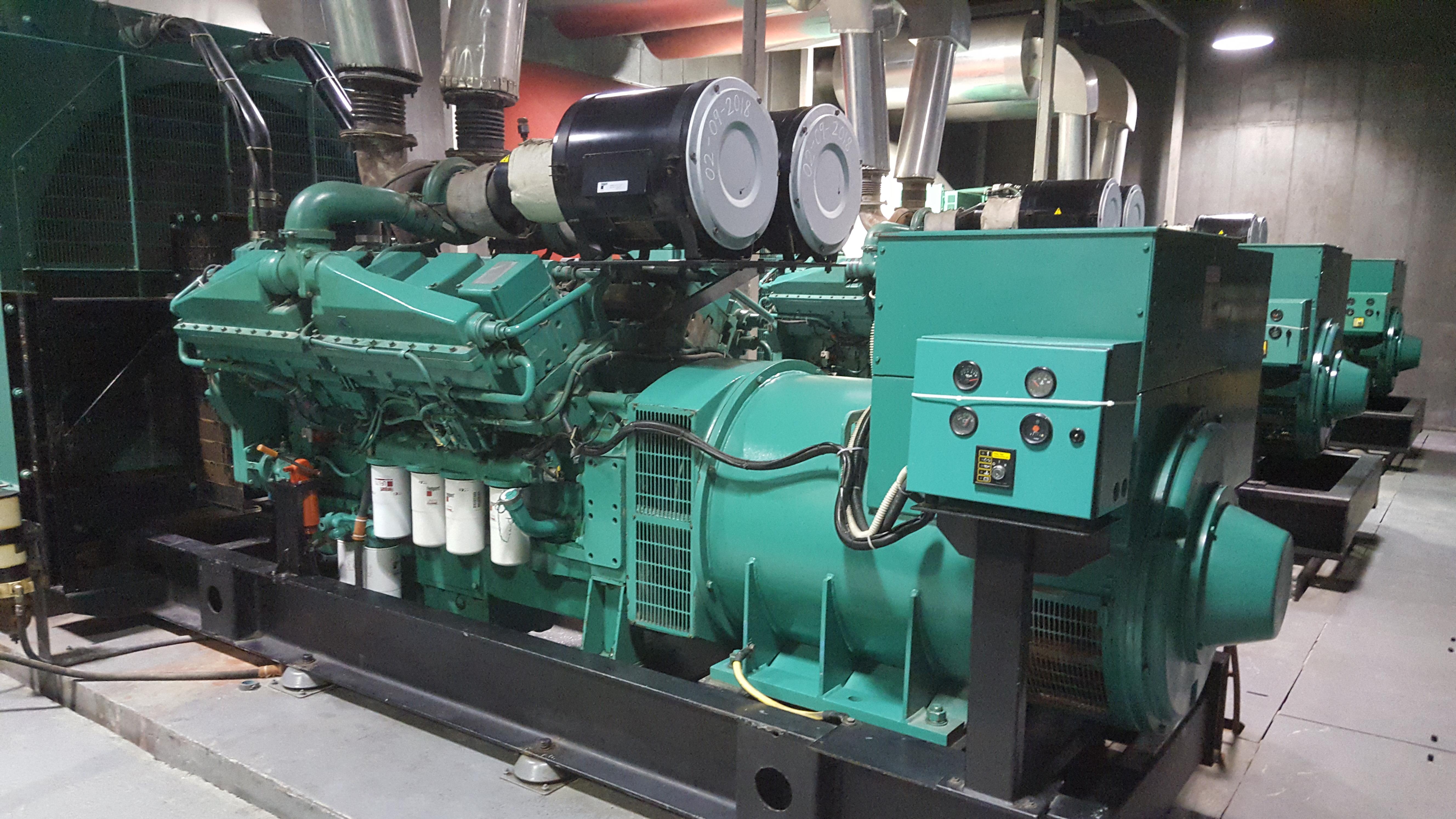
Generators can be a lifesaver during power outages or in remote locations with limited access to electricity. Whether you’re a homeowner, camper, or business owner, understanding how to properly use a generator is crucial for maximizing its functionality and ensuring your safety. In this article, we will guide you through the essentials of operating a generator, providing you with step-by-step instructions and insightful tips to make the most of this versatile machine. So, if you’re ready to harness the power of generators effectively and efficiently, let’s dive into the world of generator usage.
Generator Safety Measures
Generator safety is a critical aspect that every user must keep in mind to ensure their safety and the safety of those around them. By following these essential safety measures, you can make the most of your generator without compromising on safety.
- Location, Location, Location:
- Place your generator in a well-ventilated area, preferably outdoors, to prevent the buildup of harmful carbon monoxide gas.
- Keep the generator away from windows, doors, and air vents to avoid exhaust fumes from entering your home or other enclosed spaces.
- Ensure the generator is placed on a stable and level surface to prevent tipping or moving during operation.
- Fuel Safety:
- Always store fuel in approved containers in a well-ventilated area, away from any ignition sources.
- Avoid refueling the generator while it is running or still hot to prevent fuel spills that could ignite.
- Do not overfill the fuel tank; leave enough space for expansion as the fuel may expand with temperature changes.
- Electrical Safety:
- Before connecting appliances to the generator, double-check that they are turned off to avoid power surges or damage.
- Utilize heavy-duty extension cords specifically designed for outdoor use and capable of handling the generator’s power output.
- Do not overload the generator with too many appliances or devices; refer to the manufacturer’s guidelines for the maximum load capacity.
- Maintenance and Operation:
- Conduct regular maintenance checks to ensure the generator is in proper working condition. This includes checking the fuel levels, oil levels, and cleaning or replacing air filters as needed.
- If any issues arise, such as strange noises or smoke, immediately turn off the generator and contact a professional for inspection and repairs.
- Familiarize yourself with the generator’s operation manual and follow the manufacturer’s instructions for safe and proper use.
- Generator Shutdown:
- Allow the generator to cool down before shutting it off and disconnecting any appliances.
- Turn off and disconnect all appliances before shutting down the generator to prevent power surges.
- Store the generator in a secure and dry location, away from children and pets, once it has cooled down completely.
In conclusion, by following these safety measures, you can significantly reduce the risk of accidents, injuries, and damage associated with generator use. Remember, safety should always be the top priority when operating any machinery, including generators. Stay informed, stay cautious, and enjoy the benefits of reliable power during times of need.

Understanding the Different Types of Generators
Generators are essential tools that provide a reliable source of electricity in situations where power is unavailable or unreliable. With their various types and features, understanding how to use a generator is crucial. In this post, we will delve into the different types of generators available and their specific uses.
Portable Generators: These generators are versatile and popular for their mobility. They are typically fuel-powered and come in different sizes, ranging from compact models to larger ones that can power multiple devices simultaneously. Portable generators are great for camping trips, outdoor activities, and providing backup power during emergencies. They offer the flexibility to power essential appliances such as refrigerators, lights, and even power tools.
Standby Generators: In contrast to portable generators, standby generators are designed for permanent installation outside homes or businesses. They are connected to the building’s electrical system and automatically turn on when the main power supply fails. Standby generators run on natural gas or propane, providing a continuous flow of electricity, making them ideal for homeowners, hospitals, and other critical facilities. They can seamlessly power the entire property, including air conditioning systems and electrical appliances.
Inverter Generators: Known for their quiet operation and clean power output, inverter generators are popular for their efficiency and reliability. These generators produce AC power, which is converted to DC power before being inverted back to AC power. This process helps regulate the voltage, making them safe to use with sensitive electronic devices like laptops, smartphones, and televisions. Inverter generators are perfect for recreational activities, such as camping and boating, where quiet operation and clean power are necessary.
Solar Generators: Harnessing the power of the sun, solar generators are eco-friendly and versatile. They consist of solar panels that convert sunlight into electricity, which is then stored in a battery for later use. Solar generators are portable and can be used to charge small electronic devices like phones and tablets. They are excellent for camping, outdoor events, and providing clean energy in remote areas where power infrastructure is limited.
Diesel Generators: Known for their efficiency and power, diesel generators are commonly used in industrial and commercial settings. They run on diesel fuel and can provide a continuous power supply for extended periods. Diesel generators are highly reliable and can handle heavy loads, making them suitable for construction sites, large-scale events, and emergency backup in hospitals. Additionally, diesel generators are cost-effective and have a longer lifespan compared to other types.
In summary, is crucial for determining which one suits your specific needs. Portable generators provide flexibility, while standby generators offer seamless backup power. Inverter generators are excellent for sensitive electronic devices, and solar generators provide clean energy on-the-go. Lastly, diesel generators are powerful and suitable for heavy-duty applications. By selecting the right generator, you can ensure a reliable and uninterrupted power supply whenever and wherever you need it.

Selecting the Right Size and Capacity for Your Generator
When it comes to using a generator, it’s essential to select the right size and capacity that suits your specific needs. Whether you’re using a generator for your home, camping trips, or as a backup power source, choosing the correct size is crucial for efficient performance and longevity. In this post, we’ll provide you with helpful tips on how to select the right size and capacity for your generator.
1. Determine your power requirements:
- Start by assessing the electrical appliances and equipment you intend to power with your generator.
- List down the wattage or power consumption of each item.
- Add up the total wattage to determine the minimum size and capacity of the generator you’ll need.
2. Consider the starting power:
- Some appliances, such as refrigerators and air conditioners, require additional power to start up.
- Ensure your generator can provide enough power to support these devices during the startup phase.
- Check the starting wattage of each item and add it to your total wattage calculation.
3. Portable generator size and capacity:
If you’re looking for a portable generator, consider the following size and capacity options:
| Generator Size | Capacity (Wattage) | Suitable For |
|---|---|---|
| Small | 1,000 – 4,000 | Powering small devices, camping trips, and outdoor activities. |
| Medium | 4,000 – 8,000 | Powering a few appliances and lights during emergencies or outdoor events. |
| Large | Above 8,000 | Powering an entire home or a significant number of appliances during outages. |
4. Generator capacity for a whole house:
If you’re searching for a generator capable of powering your entire home, consider the following factors:
- Determine your home’s power requirements by examining your electrical panel.
- Choose a generator with a capacity ranging from 20,000 to 30,000 watts for an average-sized home.
- Consult with a professional electrician for accurate load calculations and generator recommendations.
5. Noise level and fuel efficiency:
- While selecting a generator, consider the noise level it produces and its fuel efficiency.
- If you plan to use a generator in a quiet environment, opt for models with low noise levels.
- Look for generators with features like an eco-mode that adjusts fuel consumption based on load demand, improving fuel efficiency.
By following these tips and , you can ensure uninterrupted power supply for your specific needs. Remember to always check the manufacturer’s recommendations and consult with professionals when in doubt. With the perfect generator in place, you’ll be ready for any power outage or outdoor adventure that comes your way!

Essential Steps for Operating a Generator Safely
Generators are a convenient power source, especially during emergencies or when you’re off the grid. However, it’s essential to operate them safely to prevent accidents and ensure their longevity. Here are some essential steps to consider when using a generator:
Location and ventilation:
- Place the generator in a well-ventilated area, at least 10 feet away from any building openings, windows, or doors.
- Make sure the area is dry and protected from rain or snow.
- Use a carbon monoxide detector in the vicinity to prevent any build-up of this harmful gas.
- Keep flammable materials away from the generator to prevent fire hazards.
Fuel safety:
- Always use the recommended type of fuel specified in the generator’s manual.
- Store the fuel in a safe, well-ventilated area away from the generator, in an approved container.
- Avoid refueling while the generator is running or still hot, to prevent accidental fires.
- Be mindful of the fuel’s expiration date and replenish it when necessary, as stale fuel can cause engine problems.
Proper connection:
- To connect appliances or devices to the generator, use heavy-duty extension cords specifically designed for outdoor use.
- Make sure the cords are in good condition, free from cuts or fraying.
- Avoid overloading the generator by not exceeding the recommended wattage.
- Use a ground fault circuit interrupter (GFCI) if your generator doesn’t have one built-in, to protect against electrical shocks.
Maintenance and care:
- Regularly inspect and clean the generator to ensure proper functioning.
- Check the oil levels, air filters, and spark plugs according to the manufacturer’s instructions.
- Store the generator in a clean and dry place when not in use, taking appropriate measures to prevent rust or corrosion.
Safety precautions:
- Never operate a generator indoors, including in garages, basements, or crawl spaces, as carbon monoxide can quickly accumulate and cause harm or even death.
- Keep children and pets away from the generator to avoid accidents.
- Familiarize yourself with the generator’s manual, understanding its features, and follow all safety precautions mentioned.
- In case of any malfunctions, unusual noises, or if you smell gas, turn off the generator promptly and seek professional assistance.
Remember, proper usage and adherence to safety guidelines make a significant difference when operating a generator. By following these essential steps, you can enjoy the convenience and reliability of your generator while keeping yourself and others safe.
Maintenance Tips to Keep Your Generator Running Smoothly
Regular maintenance is essential for keeping your generator running smoothly and ensuring its longevity. By following these maintenance tips, you can avoid unexpected breakdowns and maximize the efficiency of your generator.
Check the oil level regularly: Just like with a car engine, it’s important to monitor the oil level in your generator. Low oil levels can cause the engine to seize or fail. Make sure to use the recommended oil type and change it as per the manufacturer’s instructions.
Inspect the air filter: The air filter prevents dust, dirt, and debris from entering the generator’s engine. A clogged air filter can restrict air flow and lead to poor performance. Clean or replace the air filter according to the manufacturer’s recommendations. This simple step can significantly improve the generator’s efficiency.
Keep the fuel fresh: Stale fuel can cause starting problems and damage the internal components of your generator. To prevent this, use fresh fuel and avoid leaving it sitting in the tank for extended periods. Consider using fuel stabilizers if you plan on storing your generator for an extended period without use.
Test the battery: If your generator has an electric start, it’s important to regularly check the battery. A weak or dead battery can prevent the generator from starting when you need it the most. Test the battery’s charge level and replace it if necessary, ensuring it is fully charged before storing the generator.
Inspect and tighten connections: Over time, vibrations and usage can loosen electrical connections, hoses, and bolts. Routinely inspect these components and tighten any loose connections. This will prevent electrical issues and coolant leaks, while also ensuring the generator operates safely.
Keep a maintenance schedule: To stay on top of maintenance tasks, create a schedule outlining when specific tasks need to be done. This will help you establish a routine and ensure that no critical tasks are overlooked. Regular maintenance is crucial for the reliable operation of your generator, so staying organized is key.
Remember, proper maintenance not only keeps your generator operating smoothly but also ensures your safety. Always refer to the manufacturer’s manual for specific maintenance guidelines and follow any additional recommendations they provide. By taking care of your generator, you’ll have peace of mind knowing that it will be ready to power your essentials during unexpected power outages.
Q&A
Q: What is a generator and what is its purpose?
A: A generator is a device that converts mechanical energy into electrical energy. Its purpose is to provide a backup source of electricity during power outages or to supply electricity in areas without access to a power grid.
Q: How do I choose the right generator for my needs?
A: When choosing a generator, consider your power requirements. Calculate the total wattage of appliances or devices you want to connect to the generator. Ensure that the generator you select can handle at least the total wattage needed to power those devices.
Q: How do I safely operate a generator?
A: Follow these safety guidelines when operating a generator: (1) Only use a generator outdoors in a well-ventilated area. (2) Ensure the generator is properly grounded. (3) Avoid connecting the generator directly to your home’s electrical system without the help of a transfer switch. (4) Regularly inspect the generator for any damages, leaks, or loose parts. (5) Store fuel for the generator in approved containers away from living areas.
Q: How should I prepare my generator for usage?
A: Prior to using the generator, perform necessary maintenance tasks, such as checking oil levels, fuel levels, and inspecting air filters. Familiarize yourself with the generator’s controls, starting procedure, and any additional safety features it may have. Also, keep the appropriate fuel and oil on hand.
Q: How do I start a generator?
A: To start a generator, follow these general steps: (1) Ensure the generator is placed on a level surface outside. (2) Confirm that all connected appliances are turned off. (3) Turn the fuel valve to the on position. (4) Pull the starter cord or activate the electric starter button according to the generator’s instructions. (5) Once the generator is running smoothly, you can begin connecting your appliances, starting with the most critical ones.
Q: Can a generator be used during bad weather conditions?
A: While generators can be used during inclement weather, extra precautions are necessary. Protect the generator from rain, snow, and strong winds by using a generator shelter or covering it with a tarp. Make sure the generator is positioned on a dry, non-conductive surface to prevent electrocution hazards.
Q: What are some common maintenance tasks for a generator?
A: Regular maintenance is crucial to ensure a generator’s optimal performance. Tasks may include changing oil and filters, inspecting spark plugs, cleaning air filters, and maintaining proper fuel levels. Always refer to the manufacturer’s instructions for specific maintenance recommendations.
Q: How should I store my generator when not in use?
A: When storing a generator, it is important to properly prepare it for long periods of non-use. This typically involves draining all fuel from the tank and carburetor to prevent fuel deterioration and damaging the engine. Additionally, store the generator in a dry, well-ventilated area, away from potential sources of moisture or extreme temperatures.
Q: Are there any safety measures to consider when refueling a generator?
A: Absolutely. Before refueling, turn off the generator and allow it to cool down for a few minutes. Gasoline is highly flammable, so be cautious and avoid spills. Use the appropriate approved fuel containers, and do not overfill the tank. Also, make sure to keep any open flames or sources of ignition away from the refueling area. In conclusion, understanding how to use a generator effectively can provide you with a sense of security during unexpected power outages or while enjoying outdoor activities. By carefully following the guidelines mentioned in this article, you can ensure a safe and hassle-free experience with your generator.
Remember to always choose a generator suitable for your power needs and follow the manufacturer’s instructions for installation, fueling, and operation. Prioritize safety measures such as keeping the generator outdoors, away from flammable materials, and employing proper ventilation to prevent the buildup of toxic fumes.
Regular maintenance and upkeep of your generator, including oil changes and filter replacements, will not only extend its lifespan but also ensure optimum performance when needed the most. Additionally, being mindful of the load capacity and avoiding overloading the generator will prevent potential damage and ensure its longevity.
As with any equipment, it is crucial to be aware of the risks associated with generator use. Understanding these risks and adhering to safety protocols will help mitigate potential hazards such as electrical shocks, carbon monoxide poisoning, or damage to your appliances.
By following these guidelines and taking necessary precautions, you can harness the full potential of your generator, keeping you and your loved ones prepared and comfortable during times of power outage. Stay informed, stay safe, and enjoy the peace of mind that comes with being generator-savvy.






